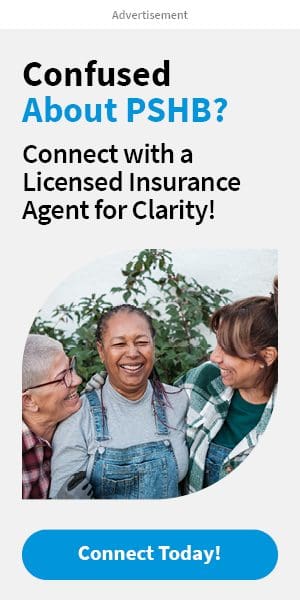Key Takeaways:
-
The Postal Service Health Benefits (PSHB) program marks a significant shift for federal employees and their families, impacting how they access and manage health coverage.
-
Understanding the new program’s integration with Medicare, eligibility requirements, and enrollment timelines is crucial to ensure uninterrupted and optimal coverage.
What Makes the 2025 PSHB Transition So Significant?
If you’re a federal employee or part of a postal worker’s family, the shift to the Postal Service Health Benefits (PSHB) program in 2025 might feel like uncharted territory. This change isn’t just a routine update; it’s a redefined approach to health insurance, tailored specifically for USPS employees and retirees. With this transition, USPS aims to modernize benefits while addressing the unique healthcare needs of its workforce.
To understand why this matters, let’s explore the background, the key changes, and how you can take advantage of what’s new. Whether you’re navigating Medicare integration or comparing PSHB plans, this guide will help you stay informed and prepared for the road ahead.
Breaking Down the PSHB Transition Timeline
Mark Your Calendar: Key Dates
-
November 11 – December 9, 2024: Open Season for PSHB enrollment. This is your window to review and choose a plan.
-
January 1, 2025: The official start date for PSHB coverage.
During the Open Season, you’ll have the opportunity to evaluate your options and decide on a plan that meets your needs. Even if you’re automatically enrolled in a corresponding PSHB plan, it’s wise to review the details to ensure it aligns with your expectations. Open Season isn’t just about avoiding gaps in coverage—it’s a chance to tailor your health plan to your changing life circumstances.
Why Timing Matters
Enrollment periods like Open Season are strictly regulated, so missing deadlines could leave you without coverage until the next enrollment window. Don’t assume automatic enrollment is the perfect fit; taking time to explore your options could save money and provide better coverage.
What’s Changing, and Why?
The transition from the Federal Employees Health Benefits (FEHB) system to PSHB is a milestone aimed at addressing the unique needs of postal employees. By creating a dedicated program, PSHB intends to:
-
Streamline healthcare options for USPS employees, retirees, and their families.
-
Align with Medicare Part B requirements for eligible retirees.
-
Enhance coverage options and cost-sharing mechanisms.
These changes reflect USPS’s commitment to offering sustainable and modern health benefits. Unlike the broader FEHB system, PSHB focuses solely on postal employees and retirees, ensuring their unique challenges and needs are prioritized. With USPS managing this program, expect streamlined processes and potentially more tailored options for members.
PSHB and Medicare: A Critical Integration
If you’re a Medicare-eligible retiree, understanding how PSHB integrates with Medicare is essential. Starting in 2025, many Medicare-eligible annuitants and their family members will need to enroll in Medicare Part B to maintain PSHB coverage. Here’s what you need to know:
Key Points to Remember
-
Who Is Affected? Anyone who becomes Medicare-eligible after January 1, 2025, must enroll in Part B to retain PSHB benefits.
-
Exemptions: If you retired on or before January 1, 2025, and are not already enrolled in Part B, you’re exempt from this requirement.
The Benefits of Integration
Coordinating PSHB with Medicare can reduce out-of-pocket costs by covering services that Medicare doesn’t fully pay for. For instance, Medicare typically covers 80% of approved services, leaving 20% as your responsibility. With PSHB, that 20% might be covered, significantly reducing your financial burden. It’s worth taking the time to understand how these two programs work together to maximize your benefits.
Enrollment Made Easy: How to Secure Your Coverage
Automatic Enrollment
If you’re currently enrolled in FEHB, you’ll be automatically transitioned to a corresponding PSHB plan. While this provides a safety net, you’ll still want to:
-
Review the plan details to ensure it meets your healthcare needs.
-
Compare other available PSHB options during Open Season.
Automatic enrollment simplifies the process, but it’s not a one-size-fits-all solution. Carefully reviewing your options ensures you’re getting the best value and coverage for your specific needs.
Manual Enrollment
For those not currently enrolled in FEHB but eligible for PSHB, you’ll need to take action during Open Season. This includes:
-
Reviewing available plans.
-
Submitting an enrollment application by the December 9, 2024, deadline.
Missing this window could leave you without coverage until the next Open Season, so don’t delay! Consider contacting your HR department for assistance if you have questions about eligibility or the application process.
What PSHB Coverage Includes
PSHB plans are designed to offer comprehensive healthcare coverage, comparable to FEHB plans but tailored to postal employees. Key features include:
-
Hospital care and inpatient services.
-
Preventive services, such as annual check-ups and vaccinations.
-
Prescription drug coverage.
-
Specialist visits and outpatient care.
Diving Deeper Into Coverage
Some PSHB plans may offer additional benefits like wellness programs, telehealth services, or family-specific plans. The specifics will vary by plan, so comparing options is vital. Be sure to evaluate premiums, deductibles, and out-of-pocket costs to find the best fit for your situation. Understanding your healthcare needs and usage patterns can help you make an informed decision.
Navigating Costs: What to Expect
The financial aspects of PSHB are a top concern for many. Here’s what you should anticipate:
Premiums and Cost-Sharing
-
Premiums: While specific amounts depend on the plan you choose, the government will continue to contribute a substantial portion of your premium, similar to FEHB.
-
Medicare Coordination: For those enrolled in both PSHB and Medicare, your overall healthcare expenses may decrease thanks to reduced out-of-pocket costs.
Out-of-Pocket Costs
These include deductibles, copayments, and coinsurance. Carefully review plan summaries to understand your financial responsibilities. Some plans may offer lower deductibles but higher premiums, so weigh these factors against your typical healthcare usage.
What Happens if You Do Nothing?
Automatic enrollment ensures you won’t lose coverage if you don’t take action. However, this doesn’t mean you should ignore the Open Season. Here’s why:
-
The automatically selected plan might not align with your current healthcare needs or financial preferences.
-
You could miss out on a plan with better benefits or lower costs.
-
It’s an opportunity to reassess your coverage based on any recent life changes.
Taking a proactive approach ensures you’re not leaving your healthcare choices to chance. Open Season is your chance to take control of your benefits and make them work for you.
Preparing for the Future
The introduction of PSHB is part of a broader effort to modernize and improve the healthcare landscape for federal employees. To make the most of this transition:
-
Stay informed: Regularly check USPS and Office of Personnel Management (OPM) resources for updates.
-
Plan ahead: Gather your healthcare usage history and consider how it might change in the coming years.
-
Ask questions: Reach out to your HR department or benefits advisor to clarify any uncertainties.
-
Monitor costs: Ensure your selected plan fits within your budget while providing the necessary coverage.
-
Educate family members: Ensure everyone affected by this transition understands what’s happening and what steps to take.
Wrapping It All Together: Making PSHB Work for You
The 2025 PSHB transition is more than just a change in your health benefits program; it’s an opportunity to reassess and optimize your healthcare coverage. By understanding the timelines, evaluating your options, and coordinating with Medicare if applicable, you can ensure your family’s healthcare needs are met without disruption. Take the time to explore your options, ask questions, and make informed decisions for a smoother transition.










